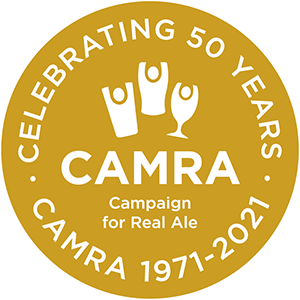Jackalope
Greater London Central - London
One star - A pub interior of special national historic interest
Listed Status: II
43 Weymouth MewsLondon, Marylebone
W1G 7EQ
Tel: (020) 3455 2871
Email: info@jackalopelondon.com
Website https://jackalopelondon.com/
Facebook https://www.facebook.com/thejackalopelondon
Real Ale: Yes
Lunchtime Meals: Yes
Evening Meals: Yes
Nearby Station: London Marylebone
Station Distance: 1200m
Public Transport: Near Railway Station (Marylebone)
Bus: Yes
View on: Whatpub
A ‘hidden’ Victorian mews pub whose interior still contains many indications of how it must have looked over a century ago.
Built in the early to mid 19th century, this was known as the Dover Castle until 2018, and the original name of the pub is still advertised within the old frosted glass of two exterior windows. There are two sets of double doors. The glass in the left-hand one announces “Bottle Entrance” and led at one time into an off-sales compartment (a Victorian display case is still fitted to the left-hand wall). The doors on the right announce “Retail Entrance”. A partition separating the two has been lost, and the bare floorboards give an indication of where a further partition once stood. Look up at an overhead dividing beam – unusually it contains narrow mirrors which allowed coachmen to observe when their passengers were ready to depart. The bar counter still retains its original position and the counter top has warped in places such that a pint may slide off it.
However, much has changed. The bar counter has been shortened leaving a stranded piece and counter flap on the right. This was done to allow access to the stairs (once used only by staff to go down to the cellar) which now lead down to a dining area and the toilets. It has also created the anomaly of there now being two door-less entrances to the rear left-hand room, which was previously the ladies toilets. Much of the wood panelling throughout the pub is a modern replacement – but done in a sympathetic style. The comfortable rear room on the right is likewise furbished in a mock-Victorian style. A large square arch into the front right-hand room replaces what once was probably a small door.
Early to mid 19th century two-storey building with a wooden frontage on the ground floor and stucco-faced on the first floor. This is one of Marylebone’s two remaining mews pubs and situated near Harley Street. The pub was referenced by Maurice Gorham in his famous 1949 book Back To The Local, as the mews pub "par excellence". It survived a nearby wartime bomb, and for many years was a local favourite under its redoubtable landlady Mrs. Mooney, not least because it opened on Bank Holidays when other pubs around did not. The phrase "Meet you at Mooney's" was in current use for a long period.
There are two sets of double doors, those on the left with ‘Bottle’ and ‘Entrance’ inscribed in the etched glass, and hence leading at one time into an off-sales compartment (a display case still remains on the left-hand wall); the others proclaim ‘Retail’ and ‘Entrance’, which must have referred to the main drinking areas so a partition has been lost. The sloping bar counter appears to be Victorian counter, but the bar back is modern work. Note the mirrors underneath the dividing beam which allowed coachmen to observe when their passengers were ready to depart.
There are three other rooms – that on the front right is entered through wide opening and has an old baffle. The dado panelling looks modern. At the rear right is a lovely small room entered through a sliding door; the doorway has been widened somewhat and there is a no. 1 above it. The division between the front and back rooms is a thin timber partition with a curious grill high up at the far end (a similar one is placed near the main pub entrance in the timber screen there: what was their purpose?).
Following the change of operator from Samuel Smiths to the owners of the Euston Tap – who changed the name from Dover Castle to Jackalope – there have been changes in the rear left area. It looks like part of the bar counter has been removed – there is a stranded piece and counter flap on the right. This has created access to the basement where the toilets are situated, and a new dining room has been created. Also, the former ladies’ toilet at the rear left has been converted to a new small room.
 Pub Heritage
Pub Heritage 